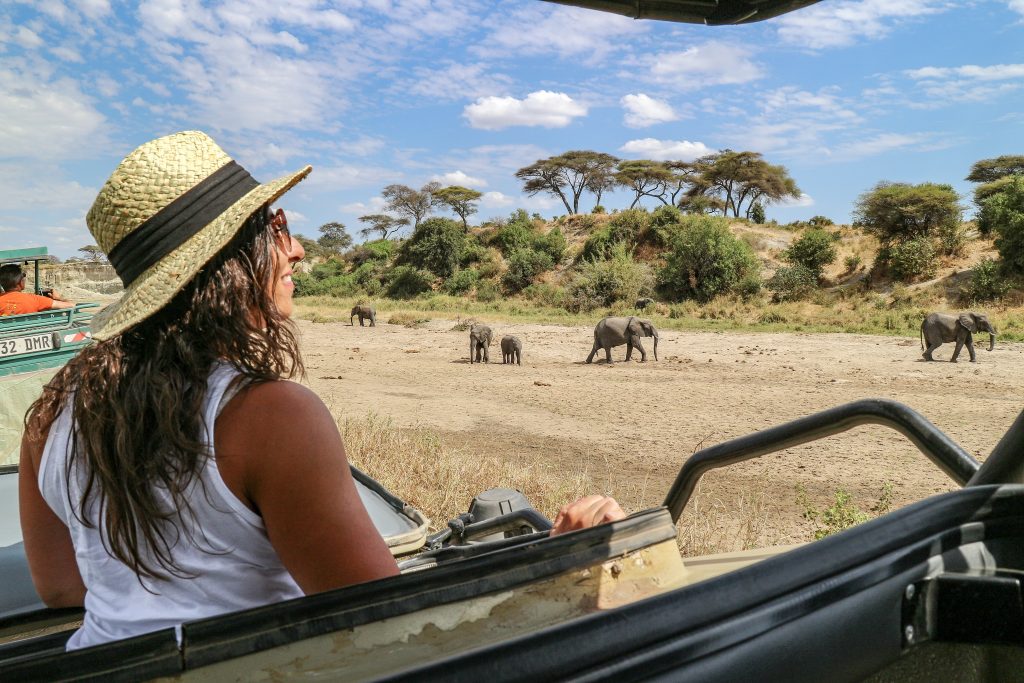- (4.8/5 from 142 women travelers)
The Complete Guide to What to Wear in Tanzania as a Woman
Deciding what to wear in Tanzania as a woman requires careful consideration of cultural norms, climate variations, and planned activities. This 2,500-word definitive guide combines our decade of experience hosting female travelers with insights from Tanzanian women about appropriate attire. Whether you're embarking on a safari adventure, exploring bustling markets, or relaxing on Zanzibar's beaches, your clothing choices significantly impact both your comfort and how you're perceived by locals. We'll cover everything from fabric selections that combat humidity to layering strategies for chilly high-altitude mornings, ensuring you're perfectly prepared for Tanzania's diverse environments.
Cultural Sensitivity Essentials
- Modesty matters: Tanzanian women typically cover shoulders and knees in public spaces
- Fabric choices: Lightweight natural fibers (cotton, linen) work best in humid coastal areas
- Color considerations: Bright colors are welcome, but avoid white for practical safari wear
- Head coverings: Carry a lightweight scarf for mosque visits and sun protection
- Footwear: Sturdy sandals with backstraps for towns, closed-toe shoes for safaris
Packing Mistakes to Avoid
- Overpacking: Many lodges offer laundry services (pack for 5-7 days max)
- Wrong footwear: Flip-flops are only suitable for poolside, not for villages or safaris
- Revealing resort wear: Bikinis should stay within resort boundaries
- Dark colors: Attract heat and tsetse flies in wildlife areas
- Excessive valuables: Leave expensive jewelry at home for safety

Local Insight: Tanzanian women often wear colorful kangas (rectangular cotton wraps) that serve multiple purposes - as skirts, shawls, baby carriers, or shopping bags. Consider purchasing one locally as a versatile addition to your wardrobe during your stay.
1. Cultural Considerations for Women's Clothing in Tanzania
Understanding Tanzanian cultural norms will help you dress appropriately while feeling comfortable in different settings. Tanzania's dress code varies significantly between:
- Business settings: Knee-length skirts or dresses with blouses
- Casual wear: Jeans with modest tops are acceptable
- Evening wear: Smart casual (no need for formal dresses)
- Headscarves: Not required but appreciated near mosques
- Shoes: Comfortable walking shoes for uneven sidewalks
- Stone Town: Cover shoulders and knees (lightweight maxi dresses ideal)
- Resorts: Standard swimwear acceptable at pools/private beaches
- Beach cover-ups: Essential when leaving resort areas
- Footwear: Water shoes for coral beaches, sandals for town
- Evenings: Light shawl for cooler sea breezes
- Layering: Temperatures fluctuate dramatically (thermal base layers recommended)
- Rain gear: Waterproof outer shell essential in rainy seasons
- Footwear: Waterproof hiking boots with good traction
- Headwear: Warm hat for early morning game drives
- Gloves: Lightweight for chilly mornings
- Modesty: Even in heat, avoid tank tops/short shorts
- Colors: Neutral tones preferred (khaki, olive, beige)
- Fabric: Quick-dry materials for comfort
- Coverage: Long sleeves/pants protect from sun and insects
- Footwear: Closed-toe shoes for bush walks
Respecting Local Customs
When visiting Maasai villages or other cultural communities, women should dress particularly conservatively. A long skirt (or kanga wrap) with a modest top shows respect. Some villages may request you remove shoes before entering homes. Observe what local women are wearing and follow their lead - this attention to cultural sensitivity often leads to warmer welcomes and more meaningful interactions.
2. Essential Packing List for Women Traveling to Tanzania
This comprehensive packing list has been refined through feedback from hundreds of female travelers. It accounts for all climate zones and activities you might encounter:
Tops (7-9 total)
- 3-4 short-sleeve moisture-wicking shirts
- 2 long-sleeve sun protection shirts (UPF 50+)
- 1 lightweight sweater/fleece
- 1 smart casual top for dinners
- 1 thermal base layer (for high altitude)
- 1-2 tank tops (for layering under shirts)
Bottoms (5-6 total)
- 2 convertible hiking pants (zip-off legs)
- 1 lightweight trekking skirt (with shorts underneath)
- 1 pair of comfortable jeans/trousers
- 1 loose-fitting linen pants for coastal areas
- 1 pair of thermal leggings
Footwear (3-4 pairs)
- Sturdy hiking shoes (broken in before trip)
- Comfortable walking sandals (with backstrap)
- Water shoes (for beaches/reef walking)
- Lightweight sneakers (optional for towns)
- Camp shoes/slippers (for lodges)
Accessories
- Wide-brimmed hat with chin strap
- UV protection sunglasses (polarized)
- Microfiber travel towel
- Reusable water bottle (insulated)
- Headlamp with red light setting
- Lightweight daypack (20-30L)

- Duffel bag: Soft-sided, 60-80L capacity (must be flexible for small aircraft)
- Pack cubes: Separate clean/dirty clothes, different outfits
- Waterproof bag: For electronics, important documents
- Foldable duffel: For souvenirs on return trip
- Personal item: 25L backpack for daily essentials
- Biodegradable wet wipes (for safari)
- Reef-safe sunscreen (high SPF)
- Insect repellent (DEET or picaridin)
- Basic first aid kit
- Menstrual products (limited availability)
- Hand sanitizer (60%+ alcohol)
Weight Considerations
Domestic flights in Tanzania typically restrict checked luggage to 15kg (33lbs) and have strict size limitations (usually not exceeding 62 linear inches). Prioritize versatile, mix-and-match clothing items that can be worn multiple ways. Many lodges offer same-day laundry services (usually $1-2 per item), allowing you to pack lighter.
Ready to Pack for Tanzania?
Our women's travel specialists can provide personalized packing advice based on:
Your travel dates and season
Specific destinations in your itinerary
Planned activities and excursions
Domestic flight luggage restrictions

